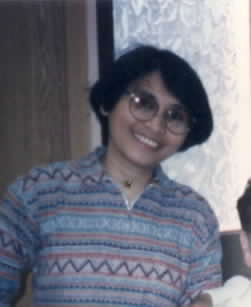Getting To Know Some Travelers In Ireland

By Annie Budiongan
My three year term here in the only Columban parish in Ireland, St Joseph’s, Ballymun, Dublin, gave me a great opportunity to get a glimpse of the life and culture of Travelers, an ethnic minority with their own history, value system, customs and a nomadic tradition, part of Irish society for centuries. Their distinct culture can be seen in their dress, language, accent, family structures and use of symbols. According to the Department of the Environment there were about 28,000 Travelers inIreland in 1999, nearly a quarter in or near Dublin, the capital.
Grief of a child
I remember one morning hearing that a baby died of ‘cot death’ in a trailer, a traveler’s mobile home. She was put to bed a healthy baby and found dead in the morning. Father Val Kyne and I visited the family to extend our condolences. All the women were inside and all the men outside, a picture you might see back home in a similar situation. Some would say that women are good in consoling each other. This support greatly helped the parents to cope with their loss. What was more striking and touching for me was when I went to the pre-school attended by the two older brothers. The younger approached me, telling me the sad news, thinking I hadn’t yet heard. I nearly cried in front of him but managed to let him keep telling me how he felt. I got my lesson for the day about death from my three-year-old friend who, with a very shy smile, told me how proud he was of the sister he had just lost and how he had really loved her.
My Irish Lola
An old woman popularly known in the Travelers’ community as ‘Old Winnie’ made me feel that I had an Irish grandmother. She was in her 80s when she died, the same age as my lola who died when I was in first year high school. Every time I visited her I felt I was at Lola’s. At her funeral I felt I’d lost somebody who was very much part of me. We had shared a lot about life, family, frustrations, hopes and how we experience God’s loving hand in our lives. I felt the pain and the loss for I knew we had touched each other’s lives and forged a friendship that I will treasure all my life.
How far away is home?
Sometimes children call me ‘Chinese.’ Any Asian they see is ‘Chinese,’ just as at home we often call a white person‘Merkano’ or ‘Merkana,’ though they could be Irish or of any European nationality. Being away from home the more we treasure our own identity and nationality. That’s how I feel, anyway. They often asked me questions like ‘how far away is home?’ It’s actually not a matter of distance but of how often I could see my family. Isn’t it sweet for these kids to be concerned about my homesickness?
Family loyalty
You ask settled people ‘Who are you?’ and they’ll answer, ‘I’m a farmer,’ or ‘a postman’ or ‘a teacher.’ Ask a Traveler, ‘What are you?’ and the answer will be ‘I’m a McDonagh,’ or ‘one of the Joyces.’ Their identity is first and foremost with their family, not with their work or occupation. Family, both immediate and extended, is the heart of the Travelers’ community and family loyalty a very important value. Weddings, for example, are very big occasions and relatives expected to travel regardless of distance just to be there for the celebration. Girls marry as early as 16 or 17, some marriages arranged by the parents. Because families are so close and interconnected, if an individual needs help or is in trouble, the whole family becomes involved.
There are still Traveler families whose accommodation is temporary and on the roadside. At present 1,200 families are living on the roadside without toilets, water, electricity or washing facilities. Many taverns and hotels still refuse to serve Travelers, despite the law against this. It’s no wonder that Travelers feel discriminated against in their own society.
Travelers Account for 0.6% of Population of Republic of Ireland
Travelers make up 0.6% of the population, according to the latest figures released by the Central Statistics Office. The census found that Travelers are a very young population: 40% aged less than 15 years in 2002, as compared with 20% for the general population, and only 3.3% of Travelers are over 65, compared with 11.1% of the general population. The survey found that over half of all Travelers claimed to live in permanent accommodation, although a census official acknowledged that this figure was self-reported and may include mobile homes. Tuam, Co. Galway is the town with the highest proportion of Travelers - 7.7%. Some 73% of male Travelers and 63% of female Travelers are unemployed compared with 9.4% and 8% for the general population. Nearly two-thirds of those who answered the question said that their full-time education ceased before the age of 15, as opposed to 15% for the general population (www.emigrant.ie 2 February 2004).
